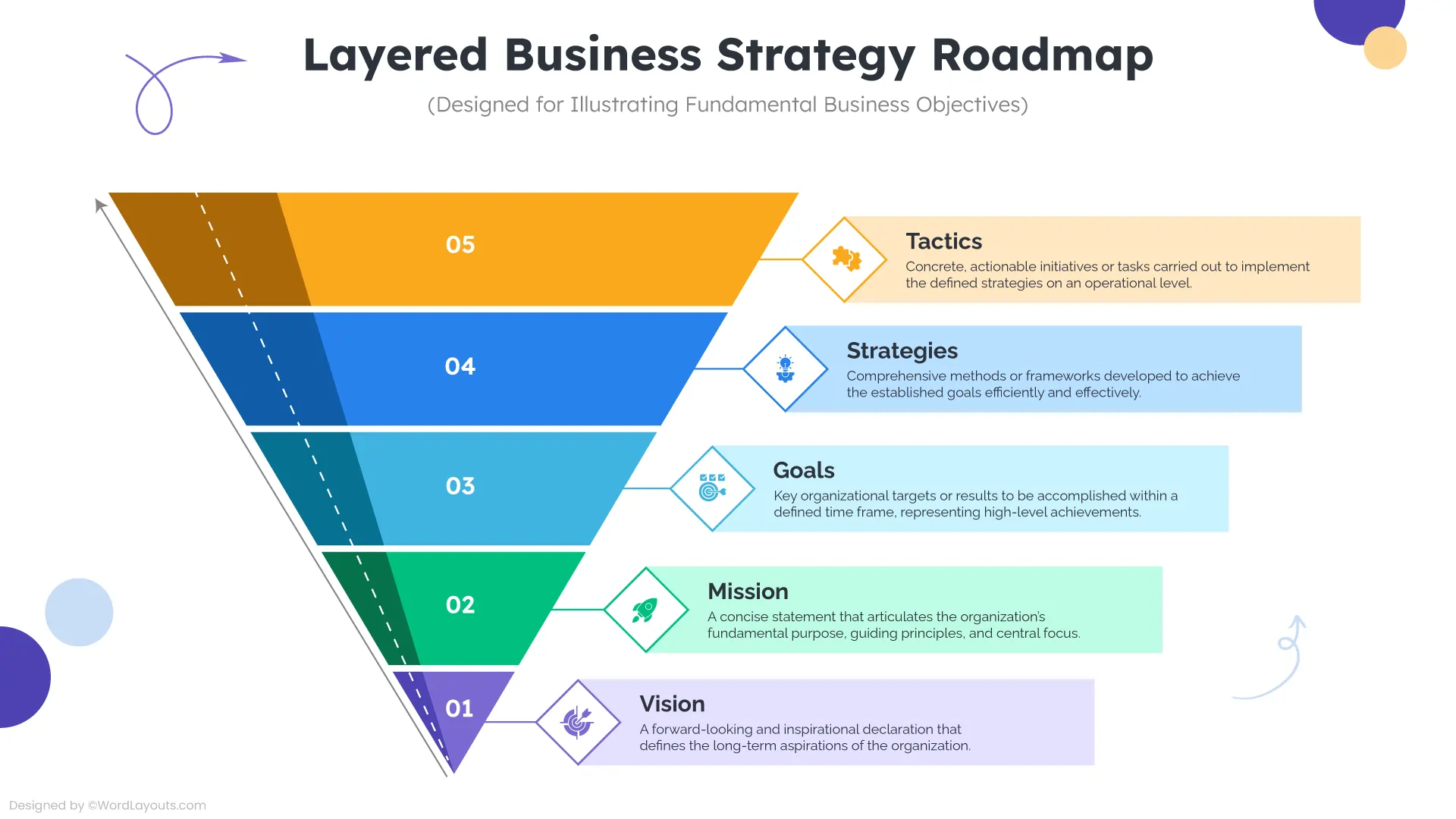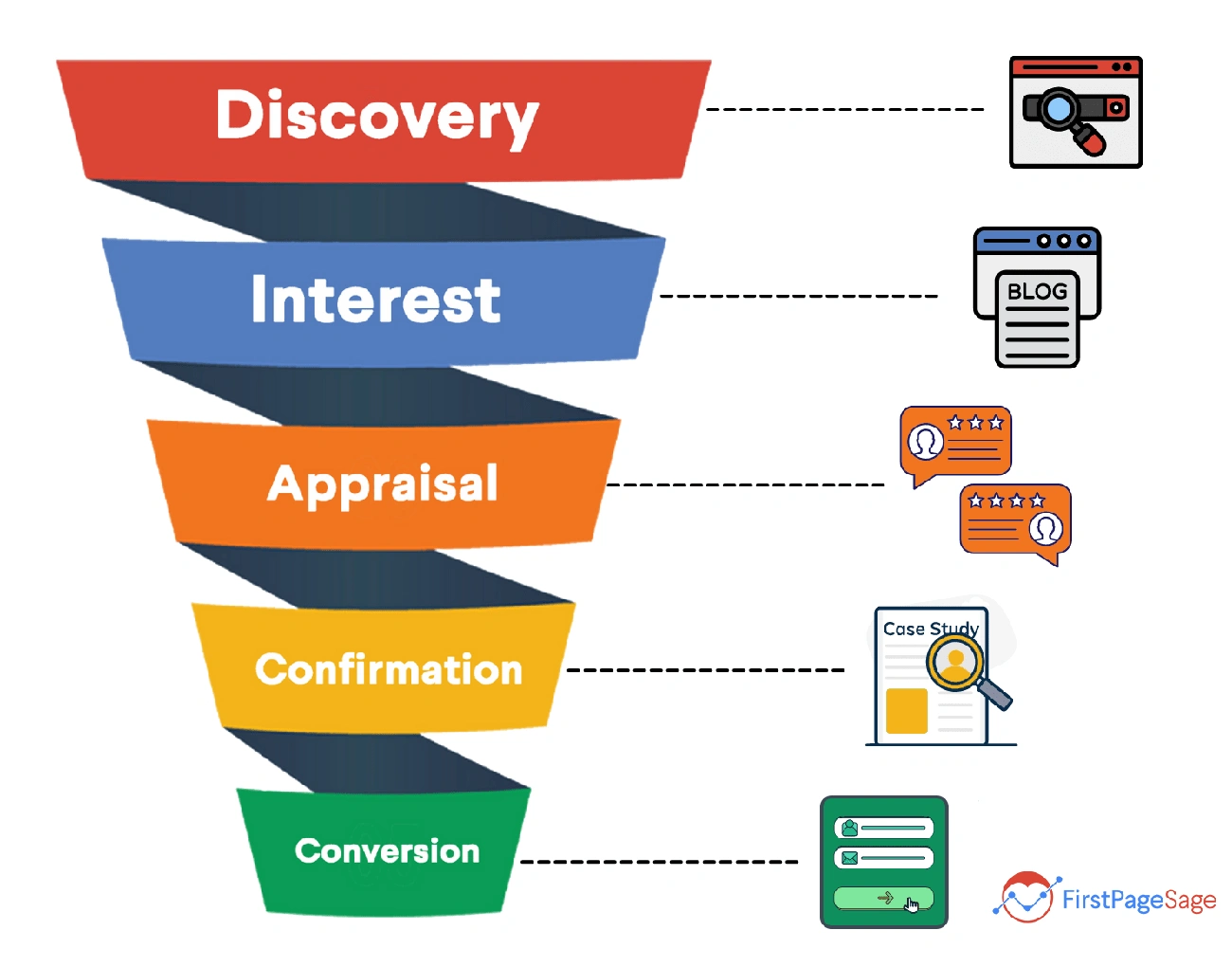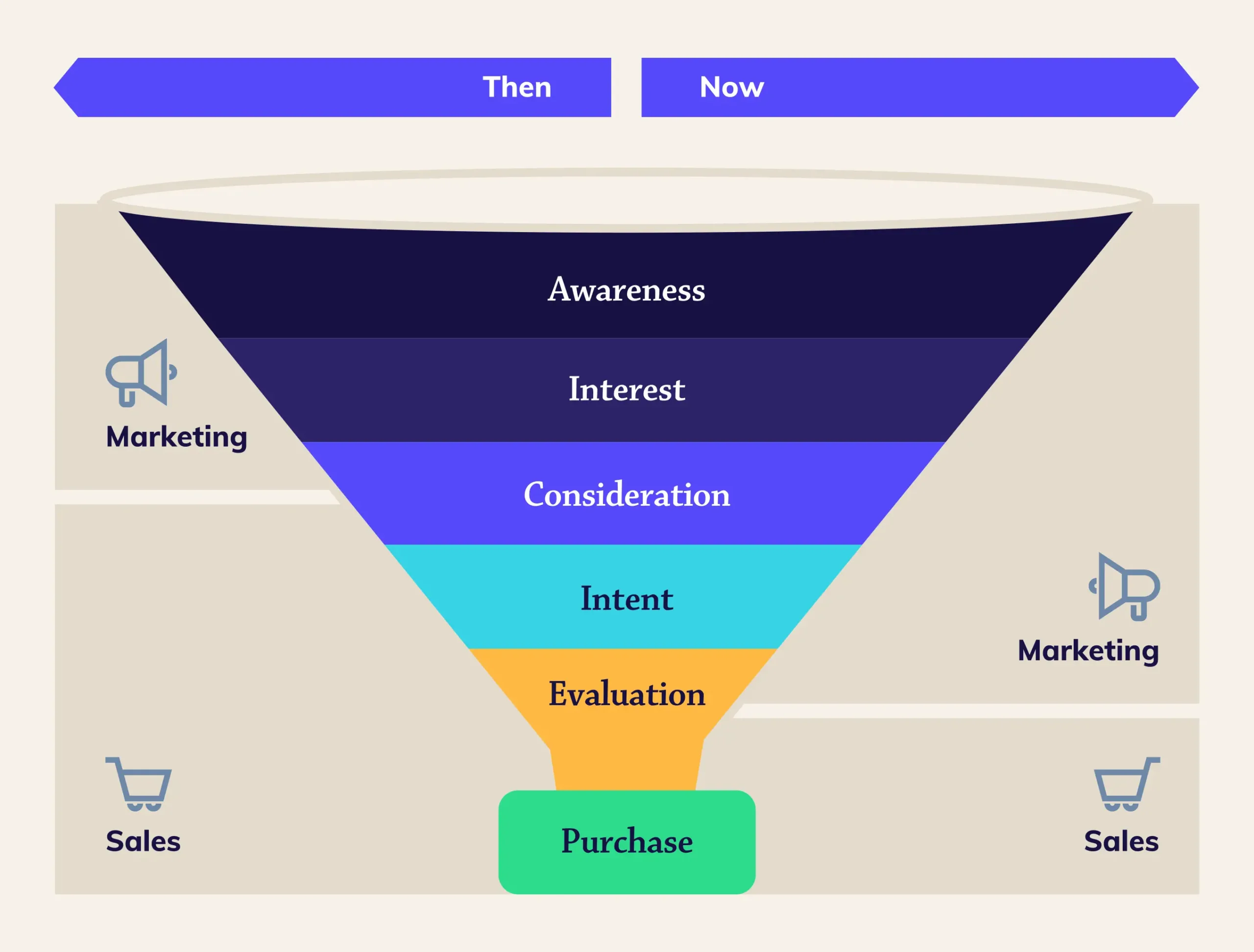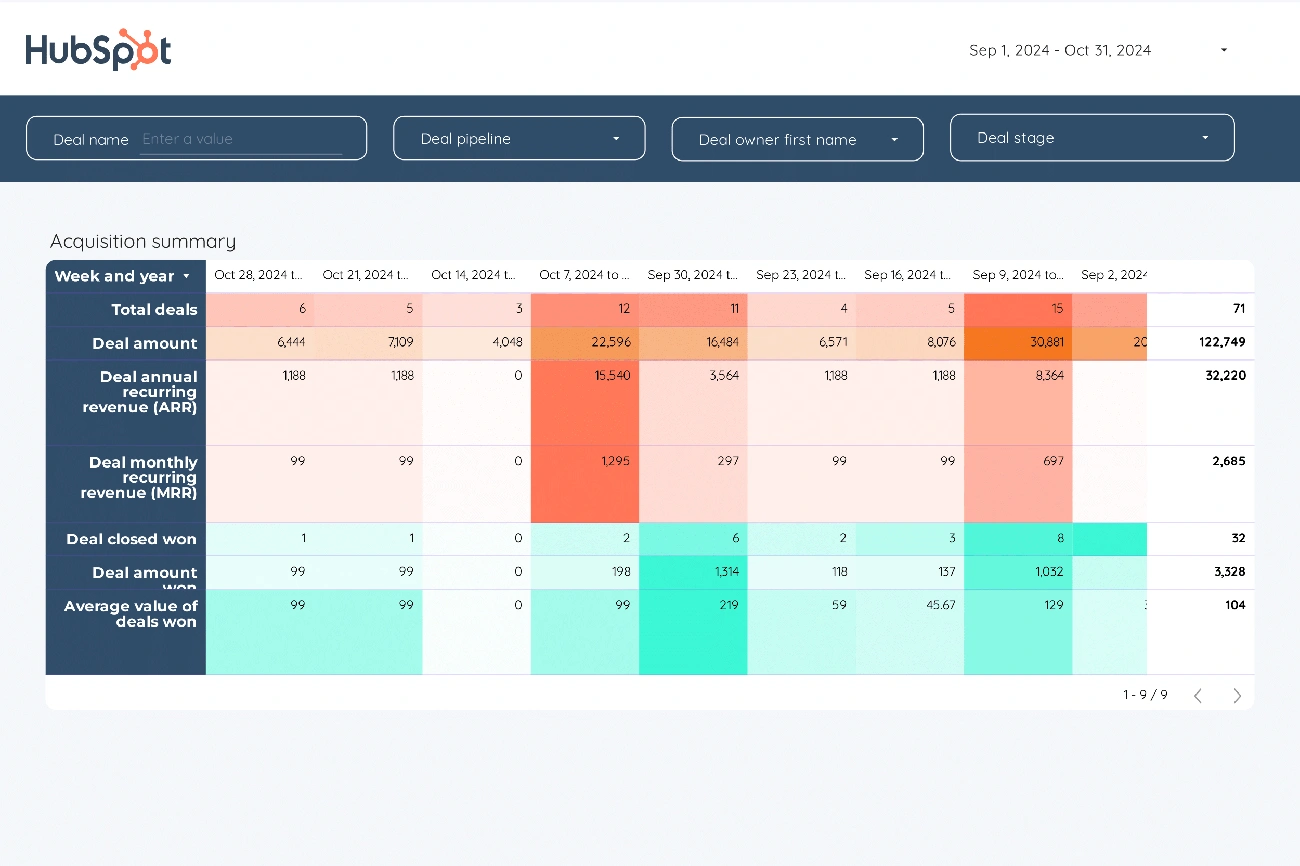The complexity of B2B growth marketing continues to rise. Recent data shows decision-making now involves 6.8 people on average, up from 5.4.
Your business needs a predictable, repeatable lead generation system now more than ever. A well-laid-out marketing funnel gives you a competitive edge that quickly shows up in your bottom line. Your sales pipeline needs prospects to flow steadily. Without them, you won’t see conversions, customers, and you’ll end up with stagnant growth.
Smart B2B marketers don’t put all their eggs in one basket. They blend multiple channels together. Quick wins from PPC complement their SEO efforts, which take longer but deliver higher ROI. The focus isn’t about getting tons of leads – it’s about attracting the right prospects who genuinely want your solution and are likely to become customers.
This piece walks you through a complete B2B growth marketing framework that guides potential customers from first contact to final purchase. You’ll learn everything – from building your ideal customer profile to mastering conversion techniques that seal deals and boost your revenue.
Stage 1: Strategic Foundation and Lead Planning

Image Source: WordLayouts
Stage 1: Strategic Foundation and Lead Planning
A successful B2B growth marketing strategy starts well before the first email or content piece. A strong strategic foundation will ensure your marketing resources directly contribute to business results.
Define Your Ideal Customer Profile (ICP) and Framework
Effective B2B growth marketing’s life-blood isn’t about reaching everyone—it’s about finding the right companies that will benefit most from your solution. B2B marketing requires a more sophisticated approach than B2C marketing, which might target “Mary Jane, 45 years old, mom of two.”
An Ideal Customer Profile (ICP) describes your perfect-fit company—an organization that matches your offering, budget, scale, and needs. Companies with clear ICPs achieve 68% higher win rates, shorter sales cycles, and greater customer lifetime value.
Your B2B ICP should focus on these five essential pillars:
- Firmographics: Industry type, company size, location, and annual revenue
- Buying committee structure: Who makes decisions and influences purchases
- Account qualification criteria: Budget thresholds and technical requirements
- Account segmentation: How to categorize potential customers for targeting
- Account enrichment: How prospects direct their buyer’s path
Think about the problems your solution addresses and whether your current capabilities better serve multinational corporations or independent startups. Your most successful existing accounts—those with the greatest customer lifetime value or repeat business—reveal common traits that become your ICP’s foundations.
Set Revenue Goals and Calculate Lead Targets
Companies often miss the mark when setting sales targets by looking at last year’s revenue and adding an arbitrary growth rate. This method ignores dynamic factors like market volatility, new product lines, or geographical expansion.
Realistic revenue goals that power your lead generation should start with these vital factors:
Business situation: Your specific business circumstances matter. Revenue seasonality, recurring streams, and contract-driven models shape accurate forecasts that match your unique situation.
Economic factors: Your industry and wider economic conditions play a crucial role. Markets with high volatility or competition will affect your realistic targets.
A rolling forecast works better than traditional annual or quarterly planning. Markets, economies, and customers keep changing, so your sales forecasts should adapt too. This method allows quick adjustments to market shifts.
Your revenue target helps determine the required leads at each funnel stage. A monthly revenue goal shows how many sales qualified leads (SQLs) you need, which then determines your marketing qualified leads (MQLs) requirements upstream.
Small weekly or monthly targets create momentum toward larger goals. Teams can celebrate regular wins while tackling bigger objectives with confidence.
Arrange Messaging with the B2B Buyer Journey
B2B buying has transformed. Recent data shows 75% of B2B buyers want a rep-free sales experience. The journey isn’t straightforward—buyers revisit different stages multiple times before making final decisions.
A Gartner study revealed that 77% of buyers found their recent purchase complex or difficult. This complexity comes from diverse buying teams working on various tasks, either together or separately, without a set order.
Successful organizations focus on collective buying tasks rather than a linear sales funnel. These tasks include:
- Awareness stage: Prospects identify problems and explore solutions
- Consideration stage: Active evaluation of specific solutions
- Decision stage: Final purchase selection
Marketing content should support buyers through each stage. Teams need materials that speed up the sales cycle and address key concerns about budget justification, ROI, vertical use cases, migration challenges, and comparison reports.
Your messaging strategy should showcase value through digital content that matches buyer goals. Strong value-focused interactions use copy based on buyer needs rather than product features, peer comparison data that creates interest, and educational content exploration options.
Interactive tools like cost calculators and product selectors help prospects verify their decisions. These tools should:
- Show your deep understanding of buyer needs
- Calculate specific benefits for their organization
- Build buyer confidence and control
- Provide clear next steps and calls to action
This strategic foundation—clear ICP, realistic revenue goals, and buyer-focused messaging—creates a framework that directs all future lead generation and nurturing activities.
Stage 2: Lead Generation and Attraction

Image Source: First Page Sage
Your strategic foundation sets the stage for the next crucial phase – generating and attracting qualified leads. B2B lead generation is the life-blood of your growth marketing efforts. It creates a steady pipeline of potential customers.
Top B2B Lead Generation Channels That Work
About 85% of B2B marketers struggle to generate qualified leads. Multiple channels working together create a resilient lead generation strategy that handles market changes better.
SEO remains the life-blood of B2B lead generation despite claims about AI reducing its value. Most B2B buyers start their purchase experience with a search query. They keep using search at least weekly throughout their research. Here’s how to make SEO work better today:
- Update existing content regularly for dynamic optimization
- Research creative keywords to find unused industry terms
- Build content that draws organic traffic and establishes authority
LinkedIn has become a powerhouse for B2B lead generation among social platforms. The platform generates 80% of B2B leads online with a 2.74% visitor-to-lead conversion rate. Twitter (0.69%) and Facebook (0.77%) lag behind.
Webinars still work well despite shifting attendance patterns after the pandemic. InsideSales.com reports 73% of B2B marketers see webinars as the quickest way to get high-quality leads. Modern webinar strategies need:
- Compelling titles showing clear value
- Promotion across multiple channels
- Quick post-event follow-up to keep momentum
Paid advertising delivers solid results across channels. Half of B2B marketers say social media advertising works best. Effective ads now need unique designs and constant testing to grab attention.
Create High-Converting Lead Magnets
Lead magnets are the life-blood of effective B2B lead generation. They capture audience attention and convince prospects to share contact details. A good lead magnet creates value for both sides – your audience gets helpful information while you gain a warm lead.
The best B2B lead magnets include:
- Free tools – Interactive solutions for specific problems, like HubSpot’s Website Grader
- Templates – Ready-made formats that save time
- Checklists – Quick guides with applicable information
- Webinars/training – Educational content showing authority
- Case studies – Real-life examples with proven results
Your lead magnets should match your core product, fix specific problems, stay simple, and provide real value. James Scherrer’s Wishpond found articles with content upgrades converted 575% better than those without.
Content Strategy for Each Funnel Stage
B2B buying stages have different goals needing unique content approaches. Top demand generation teams know success comes from being smarter—not louder—across the buyer’s experience.
Top-Of-Funnel (TOFU) content builds awareness without pushing sales. Videos, blogs, short white papers, live events, research, surveys/quizzes, and podcasts work best. These formats spread easily, build trust naturally, and create personal connections. Focus on teaching about problems instead of selling products. Keep gated content minimal to reduce friction.
Middle-Of-Funnel (MOFU) content builds engagement and shows your solution’s unique value. Leading companies use customer case studies, detailed white papers, webcasts, solution briefs, virtual events, and research. These formats work because they:
- Show how other companies solve similar problems
- Help buyers see solutions in context
- Link product features to specific challenges
- Create valuable learning opportunities
Bottom-Of-Funnel (BOFU) content builds confidence and supports purchase decisions. Customer case studies, ROI calculators, live events, solution briefs, and comprehensive white papers or e-books deliver results. These formats provide concrete numbers to justify costs, build trust through social proof, and help internal discussions with stakeholders.
Lead Qualification and Nurturing
Quality leads matter more than quantity. More leads without proper qualification wastes resources. Clear systems help categorize and nurture prospects effectively.
MQL, SQL, and PQL Frameworks Explained
Marketing Qualified Leads (MQLs) are potential customers marketing teams identify as likely buyers based on key criteria. They show interest through newsletter signups, whitepaper downloads, or webinar attendance but aren’t ready to buy yet.
Sales Qualified Leads (SQLs) have directly connected with your company’s sales team. These active leads request demos, call sales teams, or send messages about specific products. SQLs show immediate buying interest, while MQLs need more education.
Product Qualified Leads (PQLs) represent a newer approach focusing on prospects who’ve seen product value through trials or free versions. Their qualification comes from how they use the product rather than just marketing or sales interactions.
Lead Scoring and Segmentation Best Practices
Good lead scoring systems help prioritize outreach by giving points for prospect actions and traits. Key practices include:
- Creating shared qualification criteria between sales and marketing teams
- Using demographic and behavioral data to match leads with your ICP
- Tracking engagement with follow-up messages
- Updating scoring models based on conversion patterns
Quality beats quantity consistently. A small group of interested leads often performs better than larger audiences unlikely to buy.
Email Nurturing Sequences That Convert
Email marketing remains one of the simplest yet most effective ways to nurture leads and drive sales. Campaigns with 4-7 sequential messages get 27% response rates compared to 9% for shorter campaigns.
Successful nurturing sequences typically have:
- Personal messages using merge tags for customization
- Content matched to segments based on industry, company size, or interests
- Clear steps guiding prospects toward decisions
- Multiple touches across channels to strengthen messages
- Relevant offers matching the prospect’s buying stage
These lead generation and attraction strategies create a steady pipeline of qualified prospects ready for deeper engagement when used consistently.
Stage 4: Sales and Marketing Alignment

Image Source: BlendB2B
Poor coordination between sales and marketing teams creates major roadblocks to revenue growth in B2B marketing. Teams that line up their efforts see 38% higher sales win rates and 24% faster revenue growth. Many companies don’t deal very well with this integration. About 65% of sales and marketing professionals say their leaders lack proper coordination.
Build Shared Qualification Criteria
Sales and marketing teams need unified qualification frameworks to work together. Different definitions of qualified leads can hurt the entire revenue process.
Both teams must set common goals first. This vital step drives amazing results. Companies that share goals between sales and marketing teams see 54% more revenue growth compared to those with separate targets. Teams need to:
- Define “marketing qualified lead” and “sales qualified lead” the same way across departments
- Track and measure KPIs together
- Set shared revenue targets instead of separate goals
- Write down what makes a “hot lead” so marketing can adjust their strategies
Teams can develop qualification criteria best through joint workshops. Sales, marketing, and operations staff should share their points of view. Sales teams need to express what makes a qualified prospect. Marketing teams should outline how customer behavior shows readiness to buy.
Create Effective Feedback Loops
Feedback loops bridge the gap between marketing plans and ground sales experiences. Companies that use good feedback systems boost their products and customer relationships. This leads to steady business growth.
Regular feedback exchanges should have:
- Weekly meetings between teams to discuss campaigns, lead quality, and customer problems
- Dedicated channels on Slack or Microsoft Teams for updates, content work, and lead feedback
- Direct input from sales reps who talk to leads and know what shows buying intent
- Quick responses to customer feedback, especially when their ideas lead to improvements
Good timing makes feedback work better. Companies with current sales and marketing processes help 10% more salespeople hit their targets. Marketing automation tools can help smaller teams organize these processes without too much manual work.
Sales Enablement Content Strategy
Sales enablement content helps B2B customer conversations succeed. It gives sellers tools to solve problems and work faster with ready-to-use templates.
Good sales enablement helps everyone by:
- Making sales smoother as prospects learn before meeting reps – 57% of buying happens before any contact
- Keeping all reps on message about customers, products, and brand
- Helping sellers perform better with answers to common questions
Teams must work together to create useful sales content. Marketing needs sales’ knowledge but can’t create materials alone. The best sales enablement content usually has:
- ROI calculators that help champions promote your solution internally
- Case studies showing results in specific industries
- Reports comparing competitive options
- Technical docs about moving data and security
- Benefits and FAQs for different buyer roles
Research shows 71% of B2B buyers find testimonials and case studies most helpful during evaluation. About 92% are more likely to buy after reading good reviews. Reviews can boost conversion rates up to 380%.
A written content plan makes a big difference – 81% of B2B marketers say it helps teams work toward common goals. This plan should list objectives, audience groups, content types, schedules, and success metrics.
Sales enablement content creates a system where marketing and sales work as one team. This teamwork turns into a revenue engine that matches real buyer behavior. Better customer relationships and business results follow naturally.
Stage 5: Deal Closure and Revenue Systems

Image Source: Porter Metrics
The last phase of your B2B growth marketing experience centers on turning prospects into customers and setting up systems for steady revenue growth. The best lead generation and nurturing efforts won’t succeed without efficient deal closure mechanisms and integrated revenue systems.
B2B Conversion Optimization Techniques
B2B conversion rate optimization (CRO) employs data-backed tactics that encourage prospects to take meaningful actions toward closed deals. Good CRO delivers better ROI on paid media, clearer pipeline insights, and faster deal cycles.
Your B2B conversion rates will improve with these proven techniques:
Start with solid research before making changes. Heat maps, session recordings, and funnel analytics will show where prospects get stuck in your sales process. This method saves resources by avoiding unnecessary changes.
Forms need rigorous optimization. They serve as the main conversion point and deserve extra attention—31% of marketers say four fields give the best conversion rate. Make your forms better by:
- Adding auto-fill functionality where possible
- Cutting unnecessary fields
- Using AI-optimized forms that gather only essential information
Strategic exit-intent solutions make a difference. Exit-intent popups that offer valuable resources or live chat options help guide visitors to next steps in real time. These tools keep interested prospects from leaving at crucial moments.
Social proof builds trust. High-traffic pages should display customer quotes, brief case studies, and relevant client logos. These elements work best when they match the visitor’s industry or company size.
A/B testing should become routine. It ranks as the second most popular method for improving conversion rates, right after analytics. Test each variable separately—headlines, images, or CTA buttons—to find what drives conversions.
The right metrics will show if your optimization efforts work. Keep track of:
- Form completion rates (visitors who completed forms divided by total visitors)
- SQL conversion percentages (MQLs that become sales qualified)
- Lead-to-customer ratios (MQLs that become paying customers)
- Funnel drop-off points (where leads disengage)
Marketing Automation and CRM Integration
Companies that connect their marketing automation platforms with CRM systems grow revenue 24% faster and win more sales. This combination creates a powerful engine for closing deals and generating revenue.
The integration multiplies results throughout the customer’s buying process. Connected systems deliver:
Better lead-to-deal conversion through unified data access. Sales and marketing teams see all prospect activities and deliver consistent, targeted messages. Prospects move naturally from marketing nurture to sales conversations.
Rich data drives personalization. Marketing teams can employ CRM data to create targeted campaigns that convert leads to customers more effectively. Businesses that respond to leads within five minutes are 100x more likely to connect and convert opportunities—speed matters.
Lead scoring becomes more accurate with integrated systems. The automation-CRM connection helps build scoring models that flag sales-ready leads automatically. This solves a common issue where B2B sales teams take 42 hours to respond to new leads, by which time 38% never reply.
Sales teams react better to lead behaviors with streamlined post-SQL visibility. CRM systems show these activities live, so sales reps can respond quickly when leads download comparison guides or buyer’s checklists.
Clean data flows between systems automatically. This prevents duplicate records that cause false reporting, hurt email deliverability, and create mixed messages in outbound communications.
Your tech stack should blend together for live data syncing. This gives deeper insights into customer interests while driving business growth. Companies using integrated systems report up to 30% more sales and 25% better lead conversion rates.
These revenue systems transform customer engagement by enabling timely, relevant, and personal communications. Prospects feel valued and understood throughout their buying process.
Conclusion
B2B growth marketing is a detailed experience that starts with strategic planning and ends with deal closure. It’s not just a collection of disconnected tactics. This piece explores a complete framework that turns lead generation into a predictable, repeatable system to stimulate business growth.
Your B2B marketing needs a strong foundation. Clear ideal customer profiles, realistic revenue goals, and messaging arranged with the modern buyer’s experience form its core elements. These components help target the right prospects with relevant content.
Multiple channel lead generation strategies create a resilient pipeline that withstands market fluctuations. SEO, LinkedIn, webinars, and paid advertising attract qualified prospects together. Strategic lead magnets turn interest into applicable information.
Sales-marketing arrangement is maybe even the most critical yet overlooked aspect of successful B2B growth. Teams that share qualification criteria and feedback loops achieve substantially higher win rates and faster revenue growth. This collaboration turns theoretical marketing strategies into ground sales success.
Conversion optimization techniques and integrated technology systems complete the cycle by converting qualified prospects into paying customers. Evidence-based improvements to forms, strategic exit-intent solutions, and social proof elements boost conversion rates.
Note that B2B growth marketing success relies on viewing these stages as interconnected parts of a unified system. Your organization creates a revenue engine that delivers consistent results when strategic planning combines smoothly with lead generation, supports sales enablement, and improves deal closure.
This framework adapts to market changes while maintaining core principles that stimulate B2B growth. Companies that implement these strategies position themselves to thrive through market shifts with green, predictable revenue generation.
The B2B world grows more complex each day, but your approach doesn’t have to follow suit. This playbook offers the framework you need to create, optimize, and scale your growth marketing efforts whatever your industry or organization size.
Key Takeaways
Master these five essential stages to build a predictable B2B revenue engine that transforms prospects into paying customers:
• Start with strategic foundation: Define your ideal customer profile (ICP) precisely—companies with well-defined ICPs achieve 68% higher win rates and shorter sales cycles.
• Implement multi-channel lead generation: Combine SEO, LinkedIn (which generates 80% of B2B leads online), webinars, and paid advertising for consistent pipeline flow.
• Align sales and marketing teams: Organizations with strong alignment see 38% higher win rates and 24% faster revenue growth through shared qualification criteria.
• Optimize conversion systematically: Use A/B testing, simplify forms to 4 fields maximum, and leverage social proof to turn qualified leads into customers.
• Integrate marketing automation with CRM: Connected systems enable real-time lead scoring, personalized outreach, and can increase sales by 30% while improving lead conversion by 25%.
The key to B2B growth marketing success lies in treating these stages as interconnected parts of a unified system rather than isolated tactics. When strategic planning flows seamlessly into lead generation, sales enablement, and deal closure, you create a revenue engine that consistently delivers results regardless of market conditions.
FAQs
Q1. What Is the Importance of Defining an Ideal Customer Profile (ICP) in B2B Growth Marketing?
Defining an Ideal Customer Profile is crucial as it helps target the right prospects. Companies with a well-defined ICP achieve up to 68% higher win rates, shorter sales cycles, and greater customer lifetime value.
Q2. How Can B2B Marketers Effectively Generate Leads?
Successful B2B lead generation involves using multiple channels simultaneously, including SEO, LinkedIn (which generates 80% of B2B leads online), webinars, and paid advertising. This multi-channel approach creates a robust pipeline that can withstand market fluctuations.
Q3. Why Is Sales and Marketing Alignment Critical in B2B Growth Marketing?
Sales and marketing alignment is vital because organizations with strong alignment between these teams achieve 38% higher sales win rates and 24% faster revenue growth. This alignment ensures consistent messaging and more effective lead nurturing.
Q4. What Are Some Effective B2b Conversion Optimization Techniques?
Key B2B conversion optimization techniques include simplifying forms to around four fields, implementing exit-intent solutions, building trust through social proof, and conducting systematic A/B testing. These tactics can significantly improve conversion rates and accelerate the sales cycle.
Q5. How Does Integrating Marketing Automation with CRM Benefit B2B Companies?
Integrating marketing automation with CRM creates a powerful engine for closing deals and generating revenue. This integration enables improved lead-to-deal conversion, enhanced personalization, effective lead scoring, and streamlined post-SQL visibility. Companies leveraging integrated systems report up to a 30% increase in sales and a 25% improvement in lead conversion rates.
About The Author
Get A Free 1 Hour Consultation
I can help you fix your digital marketing strategy that powers your business growth.
No strings attached. No commitments required. No sales pitch from my side about our services. I will give you a patient hearing, understand your business, understand your business growth challenge and suggest various growth strategies you can implement for your business. I will talk about my service offerings, only if you want me to. Not otherwise.


